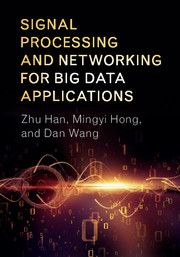Bibliography
Published online by Cambridge University Press: 18 May 2017
Information
- Type
- Chapter
- Information
- Signal Processing and Networking for Big Data Applications , pp. 322 - 360Publisher: Cambridge University PressPrint publication year: 2017
